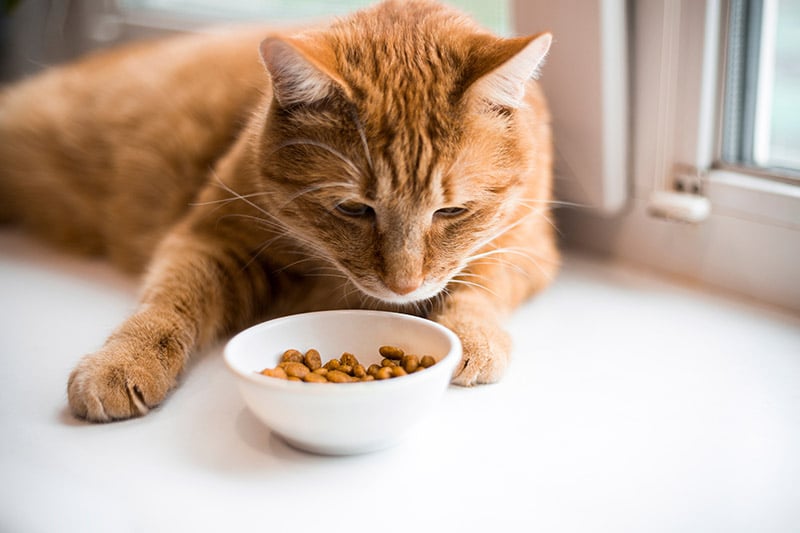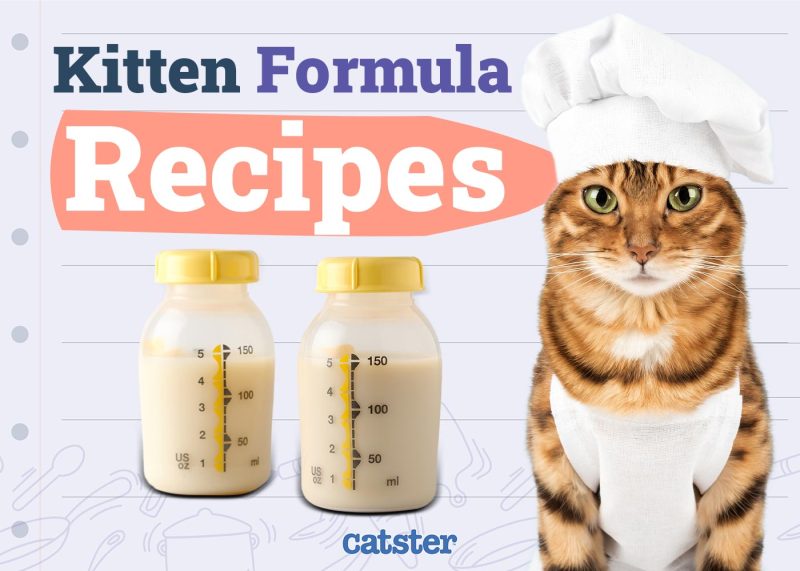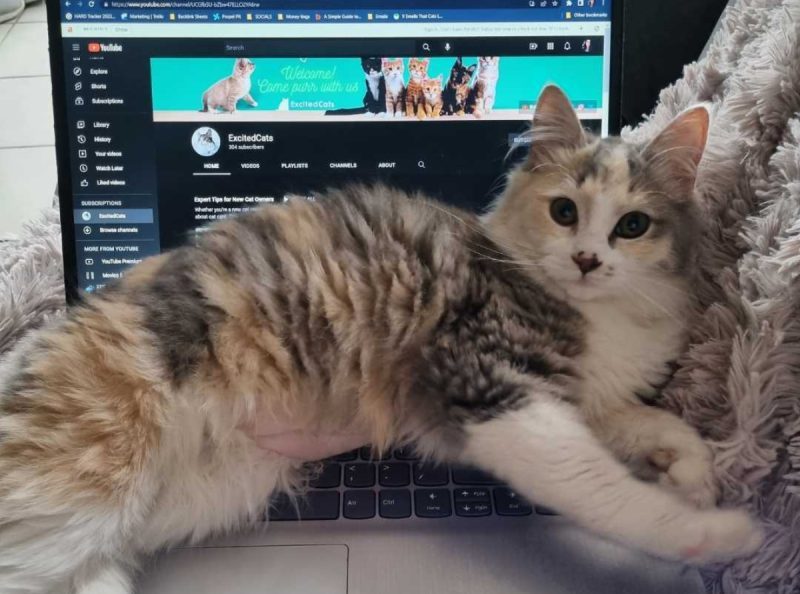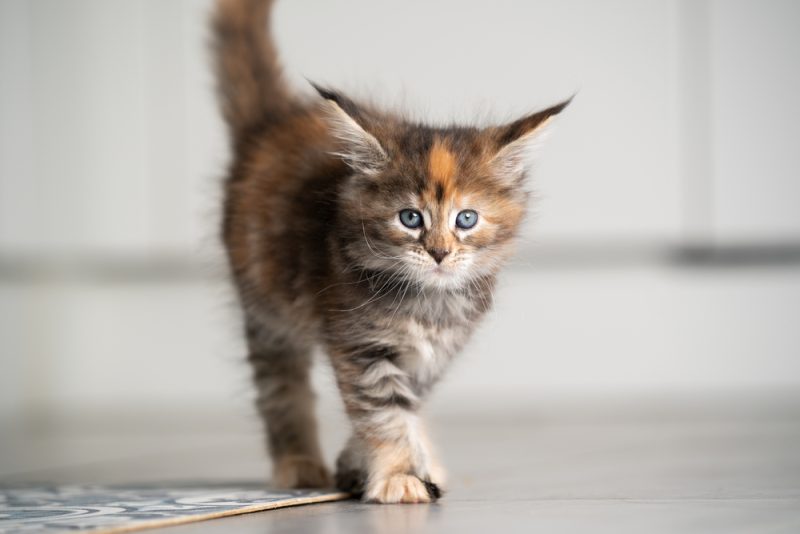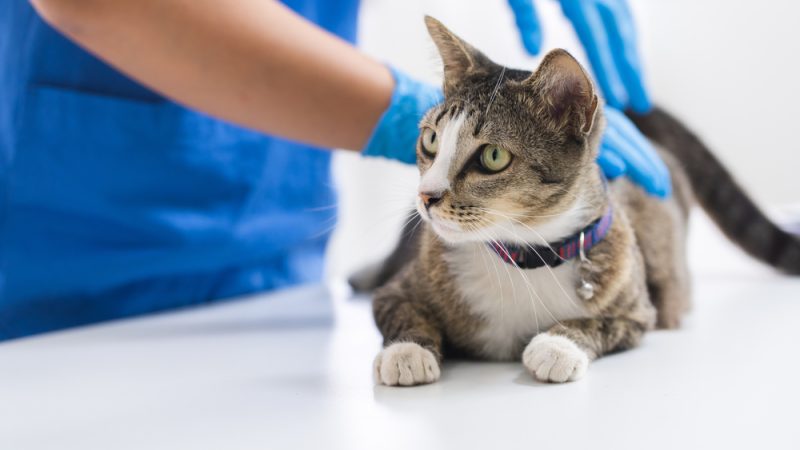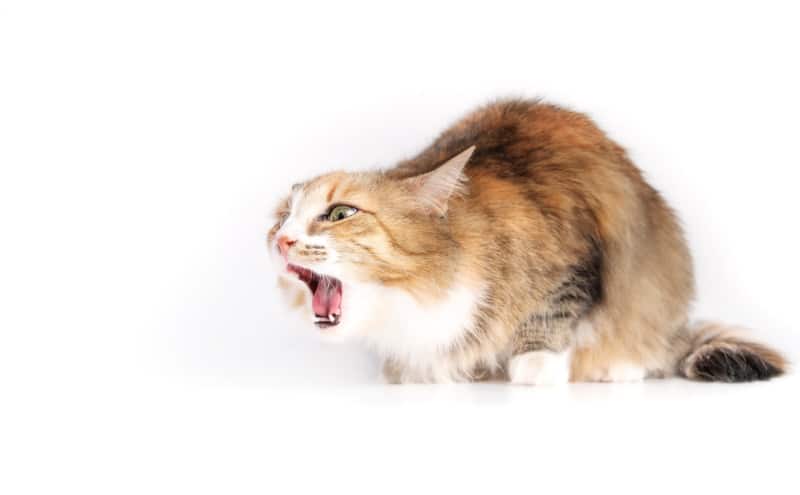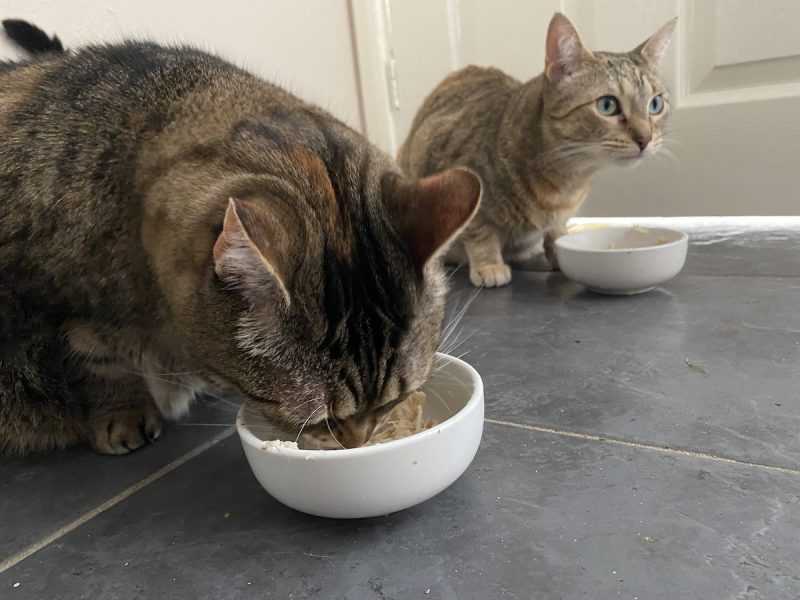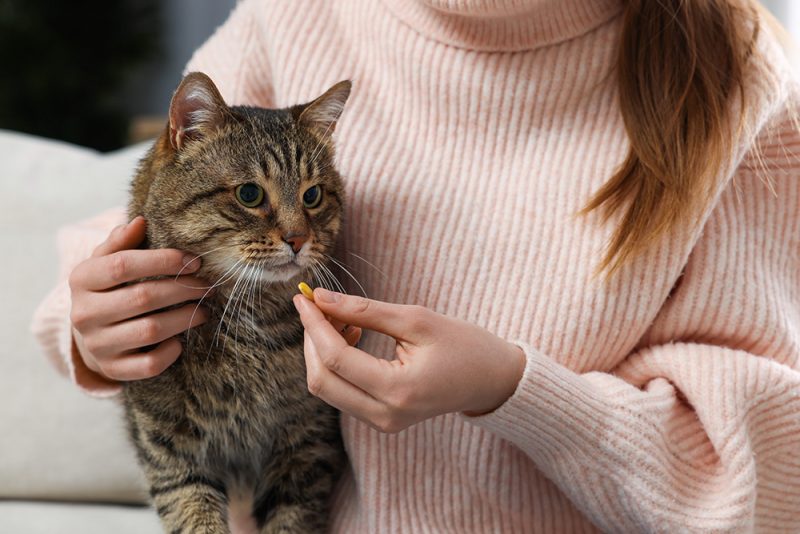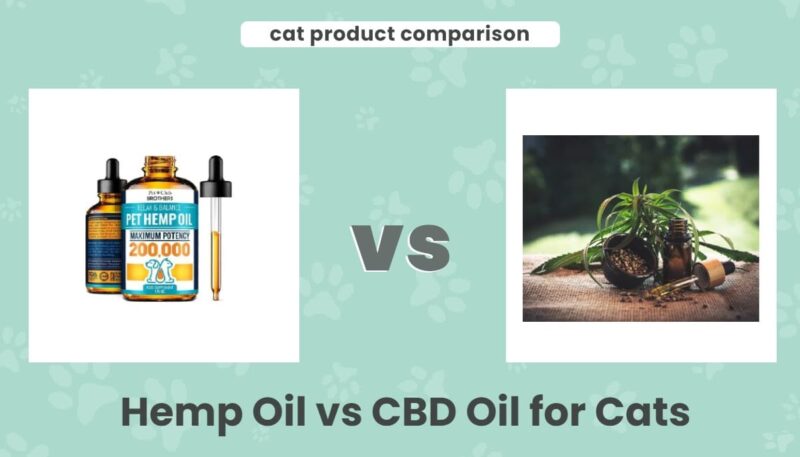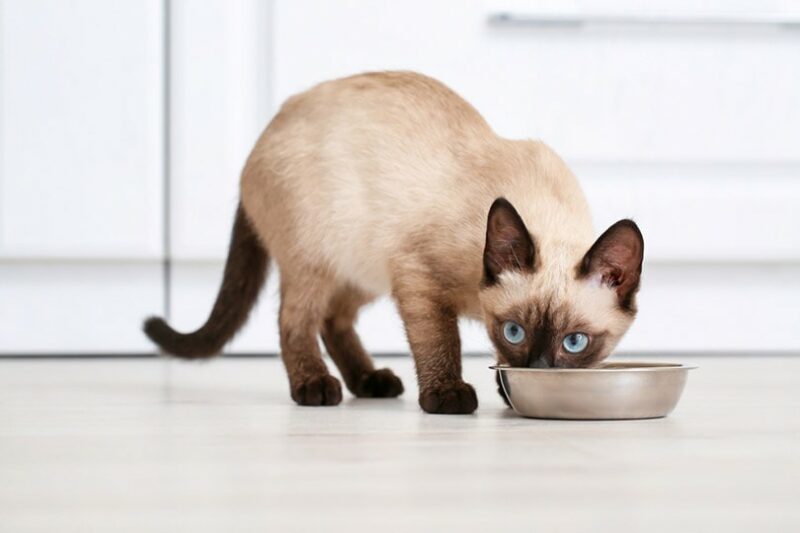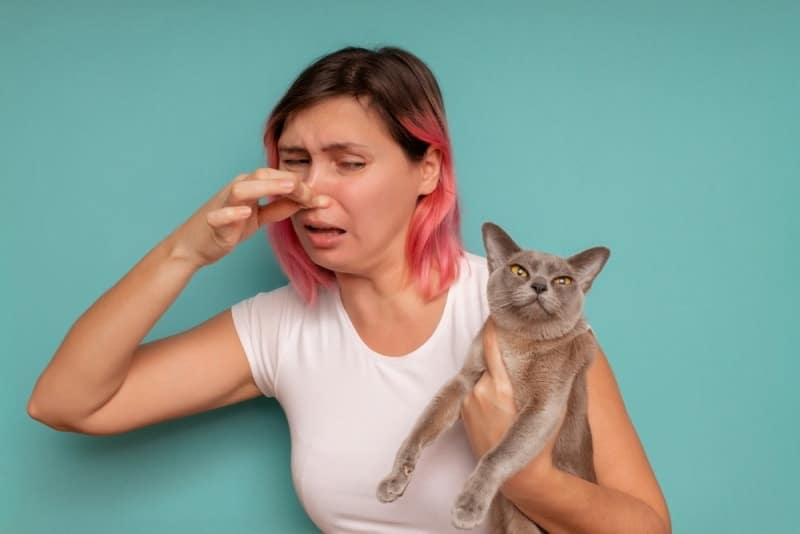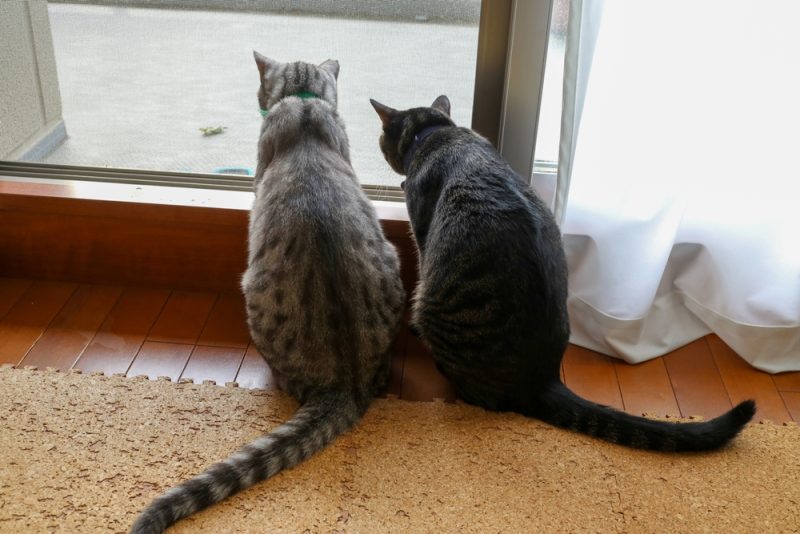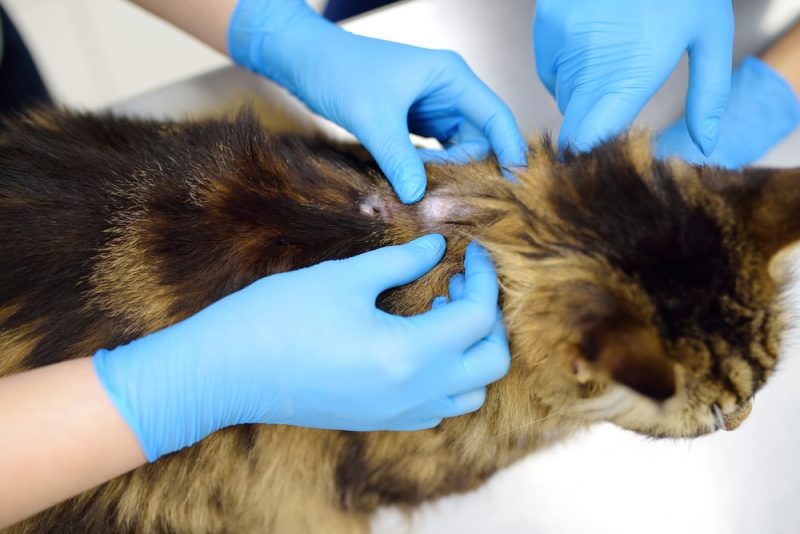In this article
Historically, the terms food intolerance and food allergy have both been used to describe any sort of adverse reaction a cat has to the food they eat. There are, however, some crucial differences between the two. A food allergy occurs when the immune system reacts incorrectly to a specific food type. Food intolerance does not involve an immune response, but rather a reaction to do with the body’s capability of digesting certain food.
Both food allergies and food intolerances can wreak havoc on our cats. They often have very similar clinical signs too, causing digestive issues in our feline friends. How do owners tell the difference between a food allergy and a food intolerance?
It is easy to get the two conditions confused, as food intolerance reactions are often very similar, if not identical to food allergy reactions. This article will explore the differences between both of these conditions.
What is a Food Allergy?
A true food allergy is an adverse reaction caused by your cat’s immune system in response to a specific protein in the food they have been fed. Cats must have been exposed to the protein before their body can develop an allergy to it. Currently, the reason food allergies occur in cats is not fully understood. More research is required to learn more about why they occur.
It is believed that certain genes can predispose cats to developing allergies. There is some research linking food allergies to atopy in cats. Lots of cats that experience food allergies also have atopy.
In cats, food allergies typically occur in response to them eating chicken, fish, beef, and some dairy products. Cats can suddenly develop a food allergy to something they have been eating for years. Food allergies can develop at any stage in their life but usually start when they are over 4 years old. Male and female cats are affected in equal measures. Anaphylaxis can also occur, which is a severe allergic reaction, but this is extremely rare.
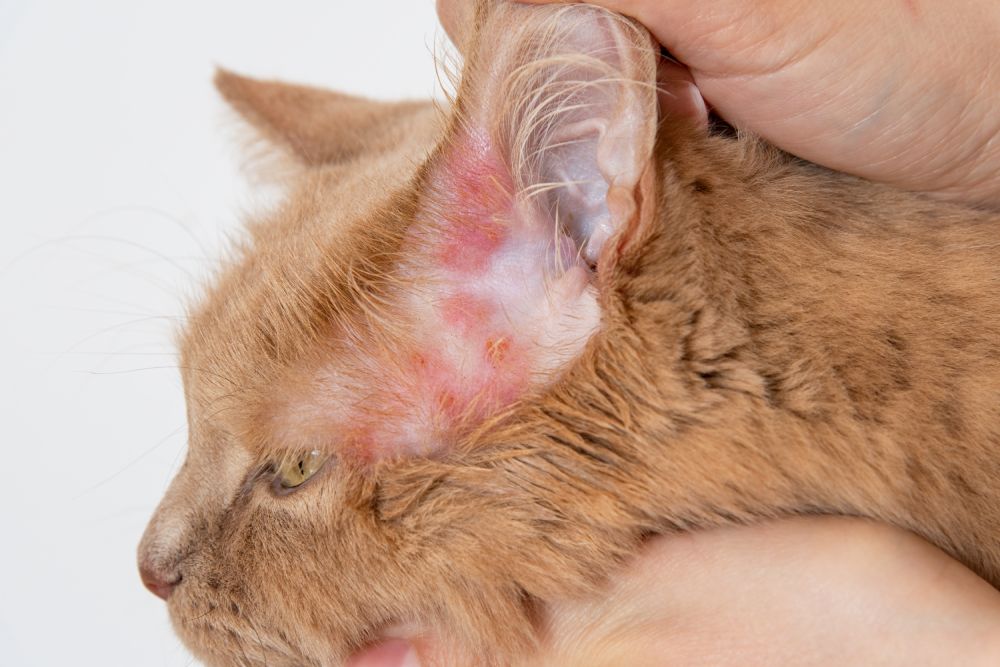
What are the Clinical Signs of Food Allergies in Cats?
The first clinical signs that owners usually report are problems with their cat’s skin.
Cats typically suffer from inflamed, red, itchy skin. The lesions are normally widespread, affecting areas all over the body. It is not uncommon for cats to traumatize themselves when itching by over-grooming. This can lead to open weepy wounds meaning they are more susceptible to infections as well.
Some cats develop gastrointestinal issues such as diarrhea and vomiting. This can present as a chronic intermittent problem that owners may not pick up on initially.
Clinical signs owners may notice include:
- Scratching that does not change with the seasons (especially around the face and neck)
- Overgrooming
- Hair loss
- Inflamed skin
- Redness/rash on skin
- Papules
- Plaques
- Ulceration of the skin
- Self-induced trauma
- Bumps on the skin surface
- Skin infections
- Diarrhea
- Vomiting
- Poor coat condition
- Weight loss
If your pet is showing these signs, we suggest you speak to a vet.
If you need to speak with a vet but can't get to one, head over to PangoVet. It's an online service where you can talk to a vet online and get the advice you need for your pet — all at an affordable price!

Diagnosis of Food Allergies
Your vet will typically recommend an elimination dietary trial for your cat. Your cat will be fed a diet that contains a new protein your cat has never been exposed to before. Another option is a protein in a hydrolyzed form. This is where the molecules are broken down into tiny particles that are not recognized by your cat’s immune system. There are many different diet options available, your vet will be able to advise which ones are suitable for your cat.
The diet is usually prescribed for a minimum of 8 weeks. No other protein must be fed during this time. This includes in the form of treats, titbits, and table scraps. Some medications contain meat flavorings as a coating so all of these must be changed before the dietary trial starts.
If positive results are seen while on the trial and the clinical signs of the allergy seem to resolve, the next stage is to start reintroducing different foods one by one. Your cat is monitored closely for a response. If clinical signs return when the old food is fed, then an allergy is diagnosed.
Allergy testing in cats can also be carried out by your vet with either a skin test or a blood test. A blood sample can be taken and sent to an external lab and skin tests can be performed at your vet practice, but these are more often used for environmental allergies. The best way to diagnose food allergies is by the elimination dietary trial.
It is worth noting that there are many different tests available on the internet owners can buy. These claim to diagnose food allergies using hair, blood, or saliva samples. None of these tests have proven to be successful in clinical studies so it is best to steer clear of these.
It is possible for cats to have multiple things happening at the same time. Some cats may have skin issues such as chronic itching that is due to other issues, for example, bacterial infections, fungal infections, and parasites. All of these causes need to be ruled out or treated alongside the allergy.
How are Food Allergies Treated in Cats?
Food allergies are managed rather than treated. Owners must feed their cats a diet that does not contain any of the food products that cause the clinical signs of an allergic reaction.
This may be a hydrolyzed protein diet or a diet that has a safe source of protein that does not cause the cat to react.
Allergies in cats vary in severity, therefore each case will be addressed and managed accordingly.
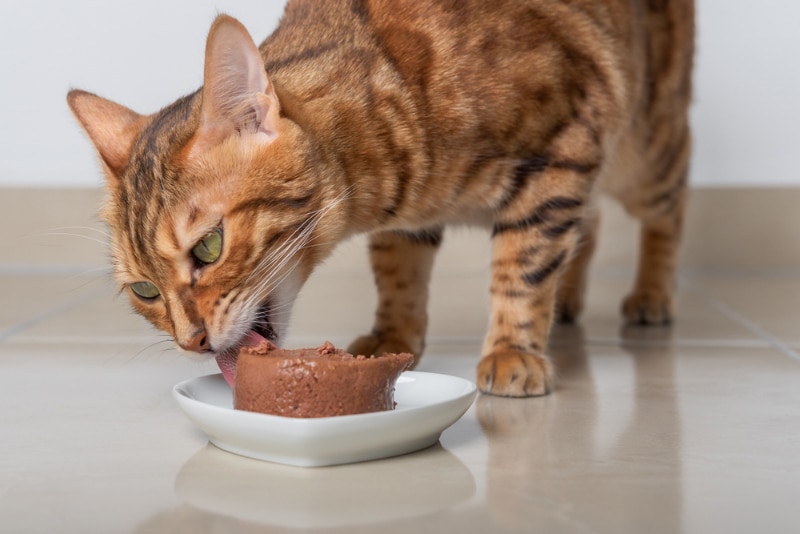
What is Food Intolerance in Cats?
A food intolerance is a digestive issue that is brought about by the inability to properly digest components of food.
Possible causes of food intolerances include:
- Enzyme Deficiencies: Some cats lack certain enzymes that are required for the digestion of foods. Undigested food can cause discomfort and irritation leading to the clinical signs of food intolerance owners are familiar with.
- Sensitivity to additives: Some additives such as food preservatives and artificial flavoring and coloring can cause a reaction in cats. It has also been suggested that some cats are sensitive to certain types of fermentable carbohydrates. When they reach the cat’s intestines, they ferment, produce excess gas, and cause diarrhea.
Clinical Signs of Food Intolerance in Cats
The typical signs seen with food intolerances can be very similar to those of food allergies. Usually, owners report:
- Swollen abdomen
- Painful abdomen
- Vomiting
- Diarrhea
- Flatulence
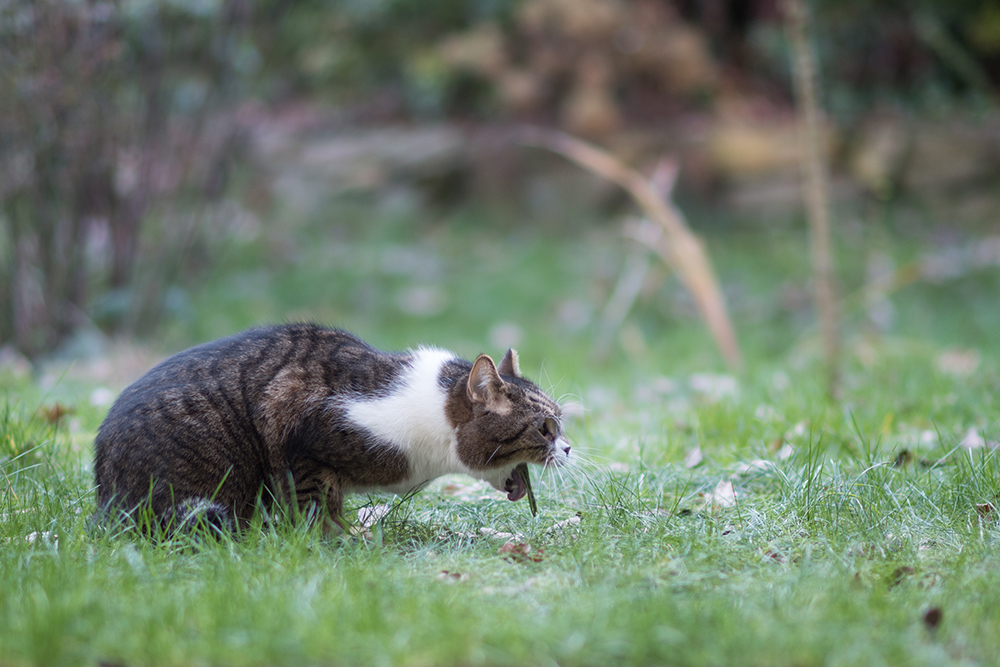
Diagnosis of Food Intolerances in Cats
Food intolerances are more challenging to diagnose as they can’t be tested for as some food allergies can. Usually, your vet will recommend a food elimination trial. This needs to be for a substantial amount of time, 8–12 weeks in most cases. For the trial, as mentioned above, only one source of a new protein, or a hydrolyzed protein, must be fed to your cat. If clinical signs resolve while on the diet yet return when the food that was previously being fed is reintroduced, your cat has likely developed an intolerance against this food. It can take a while to identify the trigger this way.
In some cases, stool analysis can give clues as to what is going on. For example, the presence of undigested food particles.
How are Food Intolerances Treated in Cats?
Food intolerances are treated by first identifying the food that causes the clinical signs, and then eliminating them from the cat’s diet. A hypoallergenic diet can also be fed instead of carrying out the elimination diet. Managing food intolerances is a tricky business and each cat is different.
Differences Between Food Intolerances and Food Allergies
- Time: Food intolerances usually occur at the time of the initial exposure to a new food. Allergies usually take time to build up. Cats will have been exposed to the food several times already before any clinical signs are witnessed with food allergies.
- Causes: Food intolerances are usually caused by gut sensitivity or digestive enzyme deficiency. Allergies are caused by the immune system’s overreaction to protein in food.
- Primary Clinical Signs: Food tolerances present with vomiting, diarrhea, and gas/flatulence. Food allergies commonly present first with skin issues such as redness, hair loss, and itching
- Diagnosis: For food intolerance, a food elimination trial and examination of stools can be helpful. Food allergies are diagnosed by food elimination trials, intradermal skin testing, and serum allergy testing.
Conclusion
Food allergies and food intolerances in cats are often grouped under the same category. In reality, they are very different issues occurring due to different circumstances. Vets need to determine whether clinical signs are due to a gastrointestinal issue or an immune system reaction.
Both types of reactions require veterinary attention and a carefully thought-out management plan.
Featured Image Credit: TarasBeletskiy, Shutterstock
